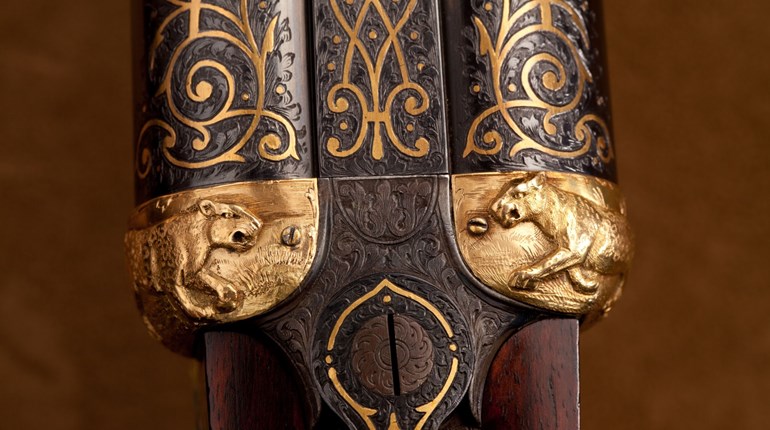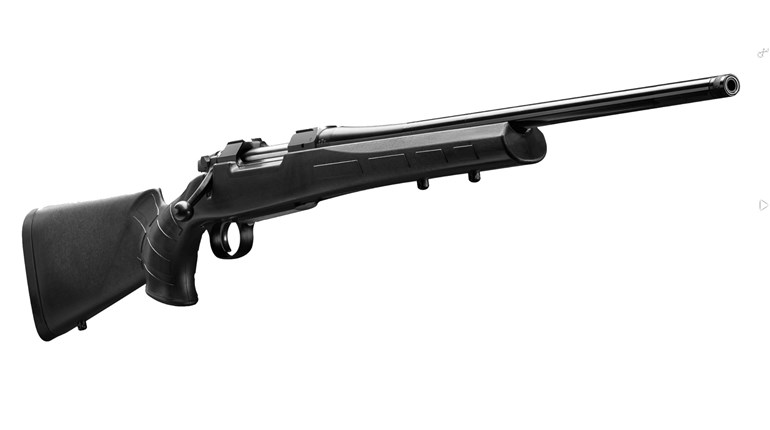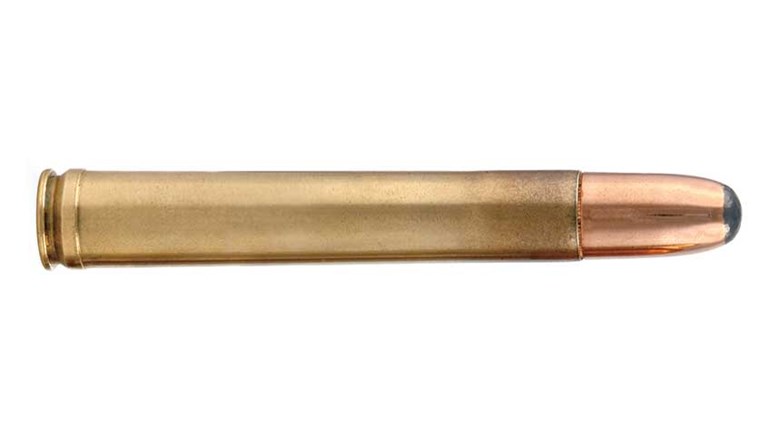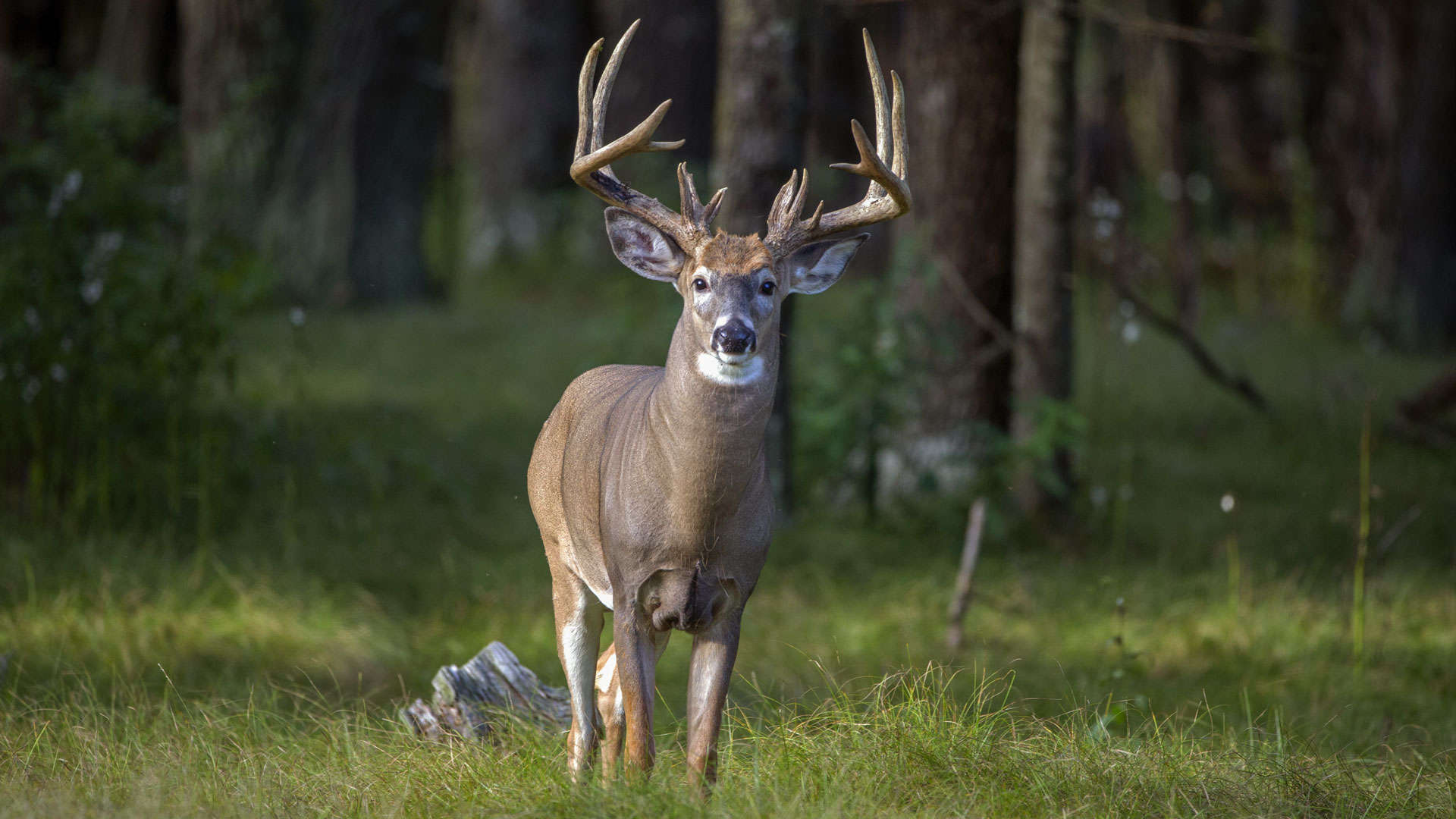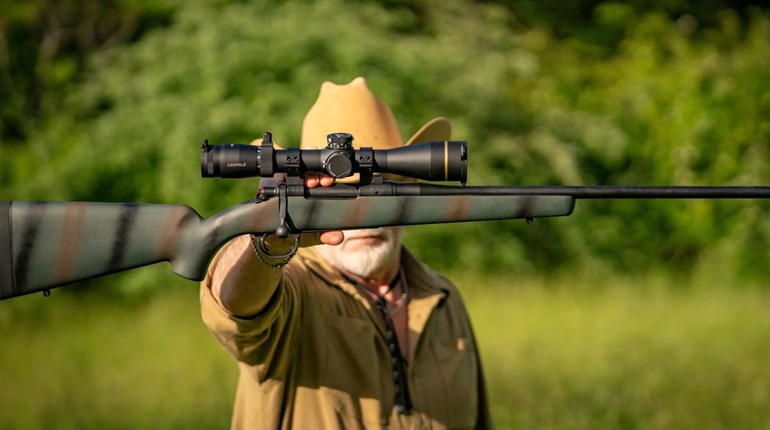
Vaughn Blom, the young, hard-working, diligent apprentice professional hunter who had laughed with us in the back of the cruiser for the past three days, became instantaneously serious.
“Phil, there’s your bull.”
The light-hearted atmosphere of the entire safari hardened almost immediately. There were eight of us, and this wasn’t our first stalk. This time, we knew we had all the necessary components to achieve our goal: the wind was right, the light was right and most importantly the elephant didn’t know we were there. The young man had seen him from several hundred yards off, and when we glassed him we knew he was the one.
Professional hunter “Cowboy” Tim Schultz had a short, inaudible conference with his head tracker, M’Butha, which culminated in a smiling nod I quickly came to appreciate. M’Butha lit a cigarette, to check the wind, and grabbed the sticks with complete confidence. Rifles were loaded, safeties were checked and the parade was formed. My hunting partner Dave deMoulpied, who owns the company I’d booked through, deMoulpied & Son Outdoor Adventures, checked the video camera and leaned in close to my ear: “Buddy, this is the one. Make it happen.” PH Danie Wingard, who’d joined us from South Africa, produced a wide grin and gently nodded. The game was afoot.
I did my best to keep a loose but sure grip on the Heym Express .404 Jeffery bolt rifle. I knew I’d be fighting nerves and emotion, but if I did my part the beautiful rifle that printed tiny little groups would settle the affair. When M’Butha spread the sticks, and Tim eased my shoulder toward the bull, time stood still. It’s funny how that happens: In moments of extreme pressure, seconds seem like days.
Hunting History Itself
In the early 1870s, famous hunter Frederick Courteney Selous—then in his early 20s—obtained permission from King Lobengula of the Matabele to hunt for ivory in the area west of the Gwai River, northward toward Victoria Falls. His legendary adventures are well documented in his 1881 book, "A Hunter’s Wanderings in Africa," which is a staple among any serious fan of Africana. He goes on at length to describe the hunts in the Dett (sic) Valley, and the place where he made camp is still there, along the east side of Hwange Park, not far from the railway. When Dave and I actually saw Selous Camp, the hair on my arms stood on end: To be hunting elephant in the same exact area that F.C. Selous did 140 years prior was an honor beyond comprehension. The fact that the bull we were following was quite easily a descendant of the bulls that Selous hunted made for a sense of connection to the past that we safari junkies are always seeking out, and to do it with a caliber of such heritage as the .404 Jeffery made for a very special event. Upon booking with deMoulpied & Son, the excitement began to simmer as I did my research into the history of the Dete Valley, and when I put the whole puzzle together, I had trouble sleeping at night. When we got to see Selous Camp, and take a photo in front of the very tree that Selous describes in his book, it all came together.
The Area
We were situated in a comfortable safari lodge, at a place called Dete Valley 3, and had access to hundreds of thousands of acres of land adjoining the easterly side of Hwange National Park. Consisting of low scrub and mopane forest, the hunting area is among the finest Zimbabwe has to offer. The land is teeming with elephants, almost to the point of overpopulation. Also there is lion, leopard, hippo, Cape buffalo and a wide variety of plains game—literally a hunter’s paradise. The farms are mostly untended, and the wildlife inhabits the land. We saw dozens of elephants every day, moving back and forth between the Hwange Park and the surrounding private lands. The railroad forms the park boundary on the easterly side, and the area surrounding Kennedy Station is especially good for elephant.
Even though our safari took place in the first week of May (not an ideal time for hunting as there is still much green vegetation and available water), the buffalo sign alone would inspire me to return to this place. Lions roared every evening, and we were even chased by a pride of five lionesses while riding on the cruiser one evening—not something one soon forgets! The entire Dete Valley has a good feel to it: slight rolling hills rising up to the northeast, and enough brushy thickets to pique the curiosity of any buffalo or elephant hunter. There is a good network of sand roads and Tim Schultz and his crew know the region very well. I’ve been on multiple safaris, in different countries throughout southern and eastern Africa, and these folks put on a show as good as it gets. The sweet sounds of the red-eyed dove, singing in counterpoint with the go-away birds and rumbling of elephants, is enough to make any man forget the civilized world forever.
Friends Made
It was a rather short safari, the second leg of a two-country journey that Messrs. deMoulpied and Wingard and I had set upon, starting with a plains game hunt in the Waterberg District of South Africa. That hunt had resulted in a blue wildebeest and impala ram each for Dave and I, and a beautiful zebra for Dave. This little jaunt proved the accuracy and power of the Heym .404 Jeffery; both of my animals were taken at more than 150 yards, and both fell quickly to a single shot each.
I was shooting the Heym rather well when we arrived in Bulawayo, and after clearing Zimbabwe customs and taking a three-hour ride to camp, I knew the Swarovski scope had to be removed, as elephant hunting is best done with an iron-sighted rifle. The fine express sights on the Heym Express hit where I pointed them, and as long as I did my part, things should go well.
Cowboy Tim’s crew consisted of two apprentice PHs, head tracker M’Butha and second tracker Sylvester. Danie Wingard was along as a helping hand, and Dave traded his .416 Rigby that he used so well in South Africa for a video camera. Eight merry fools sauntered off into the bush to track elephant, where the trials and tribulations of blown stalks, swirling winds and hard work made for lasting friendships.
Those moments that surround the actual kill shot, the cold beer, hot sun, good meals and never-ending campfire talk—those are the things that define a safari to me. Time spent with a crew of strangers that shortly become kindred spirits—that, to me, is what becomes the precious memory, not a few inches of horn either way or five pounds of ivory, up or down. Being chased by lions and sidestepping unseen, but not unheard, snakes of any species—those experiences make for an unbreakable and unforgettable bond. The gentle smile on M’Butha’s face when I’d offer him a cigarette, the wide grin Sylvester would get when I’d do my best to crack a joke in N’debele, and the quick wit of Thulani, the other apprentice PH, made for a relationship between hunters whose cultures are a world apart. Somehow, in Africa, you can find a common language, irrespective of skin color or native country.

Sticks Spread
M’Butha had his smoke hanging gingerly between his lips, and he was using a small rise of land to hide our parade from the bull’s view. I was third in line, behind M’Butha and Cowboy Tim, and when I saw the approach M’Butha was going to use, I did my best to lower my heart rate and focus on the job at hand. I could still hear the red-eyed dove singing his repetitive song in the chill of the morning, and when M’Butha spread the shooting sticks, I did my best to calm my mind. The massive bull stood only 16 yards away, and I could clearly see his temporal gland leaking fluid, a sure sign that he was in musth. That upped the ante a bit, as I knew full well that PH Ian Gibson had been killed by a bull in musth less than a month earlier. I settled the fore-end of that delicate marriage of steel and walnut in the crotch of the bamboo sticks, and Tim simply instructed, “In the heart.”
 Now the .404 Jeffery is not a huge cartridge, but I had handloaded it with 400-grain Woodleigh Hydrostatically Stabilized solids rolling out of the barrel at 2280 fps, so it had a bit of jump to it. I can honestly tell you I could see the puff of dust on the bull’s shoulder from the bullet’s impact, even through the recoil. The bull nearly went down on his haunches at the first shot, took five steps backward then regained himself. While charging forward, a second 400-grain Woodleigh, along with a 480-grain solid from Mr. Wingard’s .450 NE, set him down forever, less than 20 yards from where the first shot was fired. Cowboy Tim slapped me on the back when the bull went down, and after one more for insurance, a round of traditional three-phase African handshakes ensued.
Now the .404 Jeffery is not a huge cartridge, but I had handloaded it with 400-grain Woodleigh Hydrostatically Stabilized solids rolling out of the barrel at 2280 fps, so it had a bit of jump to it. I can honestly tell you I could see the puff of dust on the bull’s shoulder from the bullet’s impact, even through the recoil. The bull nearly went down on his haunches at the first shot, took five steps backward then regained himself. While charging forward, a second 400-grain Woodleigh, along with a 480-grain solid from Mr. Wingard’s .450 NE, set him down forever, less than 20 yards from where the first shot was fired. Cowboy Tim slapped me on the back when the bull went down, and after one more for insurance, a round of traditional three-phase African handshakes ensued.
There is a set of emotions involved with taking a bull elephant, an entirely different set than is involved with other game. Not that any deer, bear or impala is taken without a sense of reverence and gratitude; if that were to happen to me, I’d hang up the rifle for good. But with my first elephant there was a different feeling altogether. The same bundle of emotions I experienced—gratitude, pride, respect, perhaps a touch of remorse—are a common thread among elephant hunters. But, when you see the big picture, the scene makes sense.
The Hwange Elephant Situation
According to the hunters in Zimababwe, the Hwange Park has a carrying capacity of 35,000 elephants. However, the latest survey indicates the elephant population there hangs at around 77,000 elephants. Now, I can’t attest to the actual numbers, but I can attest to seeing not only huge numbers of elephants (we saw dozens every day) but the destruction they caused: downed trees, guarded waterholes, set after set of fresh tracks, not to mention the nightly migration out of Hwange Park. This is no good for the elephant, or the other game species. In my opinion, sport hunting selected elephants is a much better option than government culling.
My bull was taken at 7 a.m., and a team of skinners and butchers was brought in shortly thereafter. By 3 p.m., there was nothing more than a few bones left on the scene. We had given approximately 3 tons of meat to the local village, a population of people that are extremely protein-deprived. The bull had well-worn feet, an indication of old age (Tim estimated it to be between 35-40 years). The fact that the locals had seen this particular bull raiding the corn crop two days prior made them happy to be rid of him.
While there is a ban preventing sport-hunted ivory from being imported into the United States from Zimbabwe, my bull was taken on a non-trophy tag so all the parts, including skin and ivory, belonged to National Parks. I did get to take photos of my bull, and experience watching Sylvester chop out the ivory so I could measure it to have reproduction tusks made here in the States.
I was honored to have hunted the same patch of ground that F.C. Selous did, and to have the privilege of hunting the African elephant. I hope that wise conservation and common sense will result in my grandchildren having the same opportunity to hunt the giants.













